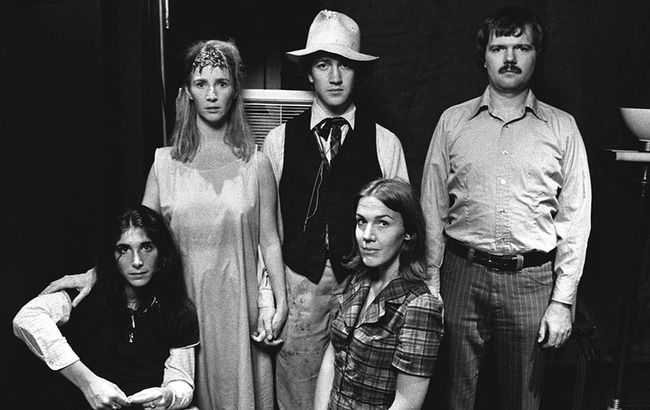Eraserhead (1977)

I watched this for only the second time this week, having first encountered David Lynch's bizarre tribute to Chaplin in 1980. Forty years on, the images are as unsettling as ever, if not quite as shocking, and it is the images - and the sounds - that are most memorable.
Obviously, all 1001 films have memorable images, but mostly they also tell interesting stories in broadly conventional ways. Lynch chooses instead to present a series of black and white images that only occasionally create a narrative. For most of the movie, the viewer is challenged to doubt what he is seeing, and to give up trying to 'make sense' of the 'story'. For example, on more than one occasion, the camera pushes in extreme close-up towards the protagonist's head (Henry, played by Jack Nance), almost suggesting that what follows next is literally inside his skull. Similarly, we are led to believe that inside the radiator in Henry's apartment there is a small theatrical stage and a woman with exaggerated hamster cheeks singing thereon.
Yet there is just enough narrative coherence to confuse the audience into thinking that the scene where Henry, visiting his girl's parents for dinner, starts to carve a roast chicken that waves its legs back and forth and begins to ooze a black liquid, is real. When later, Henry loses his head and it is scooped up by a young boy who takes it to a factory where it is turned into a rubber-topped pencil, the audience should surely know that nothing is to be taken as literal story. Puddles become moon-like craters, ectoplasm becomes umblilical cord and seeds become maggots. A semi-naked, corrupt and cobwebbed signalman hauls levers that suggest he has some kind of control over the incidents we are shown, but he is only seen near the beginning of the film, and there is no explanation of his role.
Eraserhead, shot in black and white (and, more importantly, grey: the DVD has a facility to calibrate your set so that the grey tones will be more precisely rendered) is surely meant to recall silent cinema, both the horror and the comedy, and return audiences to a time when the best directors of the period were still exploring the possibilities of the new medium. Eisenstein's maggot infested meat, Murnau's dark shadows and squalid housing; Chaplin's black suited tramp with a comically short stride; Lang's industrial tyranny; Bunuel's irrational associations and moments of horror: all find echoes in Lynch's exploration of Henry's subconscious fears.
And ours, I presume.


